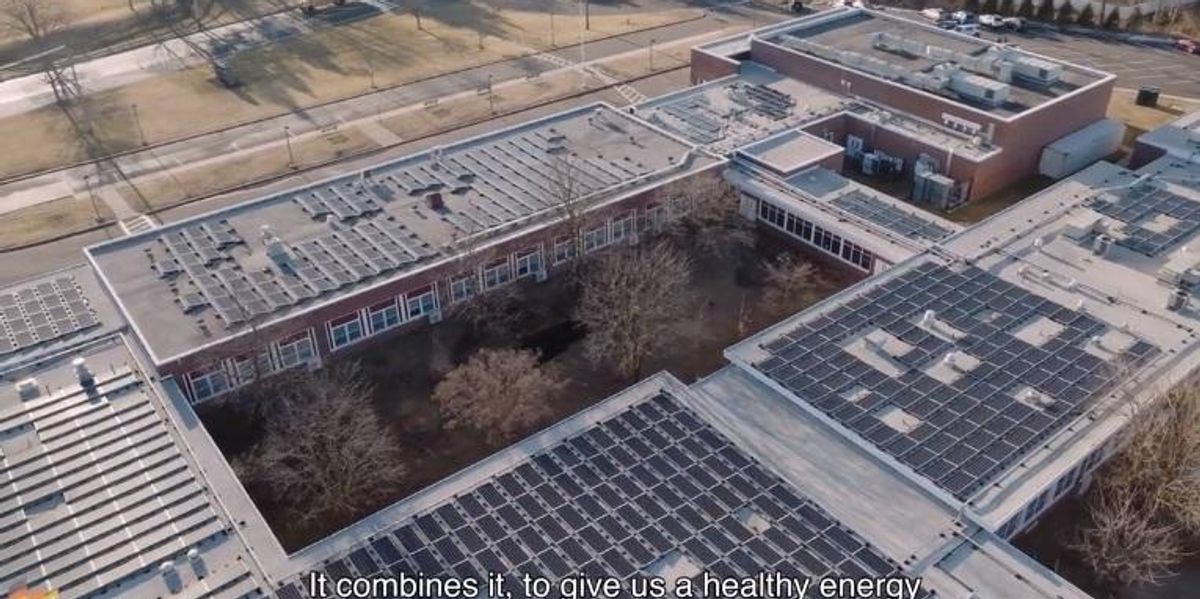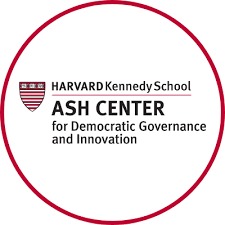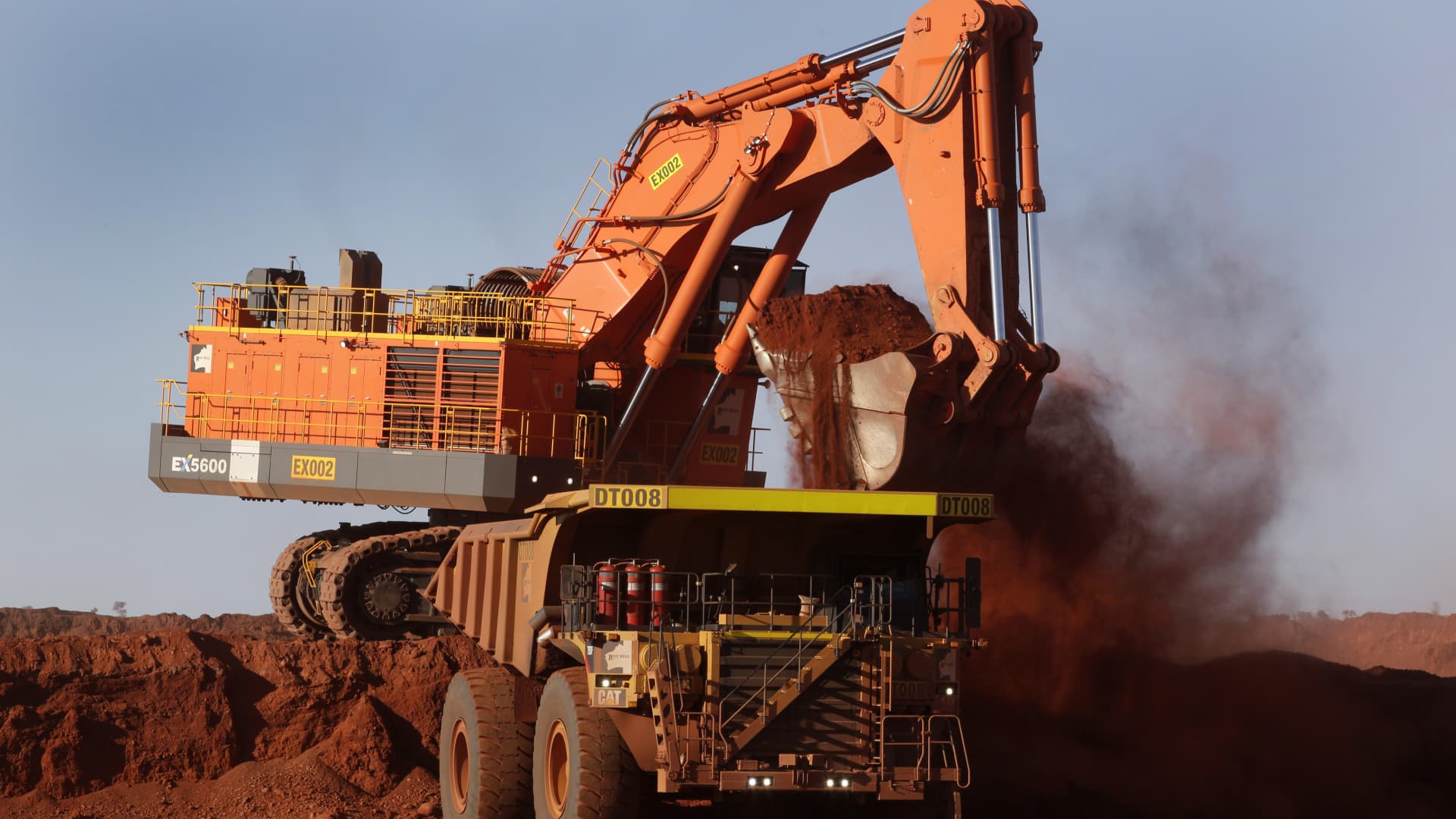It’s been another crazy exasperating week, so we bet you could do with some really cool news about public schools that are switching to clean solar energy, saving millions of dollars in some cases, and using the savings to improve the schools and even their communities. This isn’t a proposal in some position paper about how we might create a wonderful clean energy future, either — it’s been going on for a while now, as the New York Times recently reported (free gift link). The story notes that one in 10 US public and private schools in the US was using solar energy by early 2022, according to a report from clean energy nonprofit Generation 180 — twice as many as in 2015. That’s one more benefit of the rapid decline in the cost of solar panels in the last couple decades.
Hey, if you’d like to say “Thanks, Obama,” you certainly could, since clean energy investments in the 2009 American Recovery and Reinvestment Act helped jumpstart the widespread adoption of renewable energy and the resulting reductions in solar energy costs.
Also very cool: In many places, the Times notes, schools were able to make the switch to solar power with no upfront costs, thanks to regulations (which vary by state and local policies) that allow third-party ownership of solar installations:
Under those agreements, solar companies pay for solar systems up front, along with installation, operation and maintenance. In return for housing the system, schools typically buy electricity at reduced rates, and can redirect the savings toward classrooms or facilities upkeep. According to Generation180, such agreements are crucial, and have been used to pay for nearly 90 percent of total solar capacity at schools.
So what have schools been up to with their fully automated solar communism? Mostly cool projects like upgrading school infrastructure or teacher salaries, but some have even spread the benefits to their communities, too:
In Heart-Butte, Mont., the school superintendent, Mike Tatsey, arranged for three-quarters of the energy credits generated by the district’s new solar panels to help lower the electric bills of households in the community, located on the Blackfeet Indian Reservation. He believed that freeing up extra spending money for staples like groceries and shoes could have a ripple effect in classrooms.
“That little bit, in my mind, might help a family feel better about themselves, and kids feel better themselves,” Mr. Tatsey said. “In a roundabout way, when they come to school, because of that little bit of extra hope we’re able to give, they’ll be ready to learn.”
We love this one, too, because we are addicted to big government that helps people, and we keep forgetting why that’s supposed to somehow be bad and morally suspect:
In Louisa County, Virginia, school administrators used federal Covid recovery and local funds to place 32 solar-generated mobile Wi-Fi stations throughout the community during the height of the pandemic, helping to connect families and the roughly 40 percent of students who didn’t have reliable internet access. “The beautiful part of the project was once we designed the Wi-Fi trailers, we had high school students build them,” said David Childress, the district’s director of technology.
The solar installations at the schools themselves are forecast to save the school district as much as $8 million over 30 years. The Times notes that the forecast hadn’t expected any savings in the first year, 2021, but then energy costs spiked for everyone using the local utilities, and the schools saved $4,000 that hadn’t been anticipated.
Other districts are using their energy savings to create apprenticeship programs so students can learn to become solar installers, or to upgrade schools’ cooling and heating systems, or to replace old outdated lighting systems, which will further reduce energy costs over time.
Isn’t it fun to think about a feedback loop that, for a change, doesn’t involve the planet getting hotter?
Now, it’s not all solar-oven hotdogs and beer, especially during school hours. Local regulations are key to the third-party arrangements, and lots of utilities are downright hostile to home and business solar, because it cuts into the power that customers have to buy from the grid. Some states are also in cahoots with their biggest utilities, too, even in sunny places where it should be everywhere. Even with those limits, though, the trend is improving, with 30 states allowing third-party ownership, and the Democrats’ new climate bill is likely to fund an explosion of new green energy businesses. At some point, big utilities will decide it’s to their benefit to be making money from solar instead of trying to restrict it.
Back to the cool stuff: In Batesville, Arkansas, some school buildings have become local tourist destinations because they’re novel enough that people want to snap a selfie with them in the background. The district put up solar canopies over the loading docks at the junior and senior high schools, which not only sheltered workers from sun and rain, but also attracted looky-loos. Superintendent Michael Hester called the canopies “the sexiest thing we’ve done,” which may say more about Batesville than about the sexy, sexy solar. They’re very nice panels, to be sure.

But how’s this for sexy? The initial estimate for the district’s energy savings was $2 million over 20 years, but when energy prices went up, that estimate doubled. The school district raised teacher pay, with base pay for a new teacher increasing from $30,000 a year to $40,000. Hester told the Times the district has been able to weather the national teacher shortage, attracting new hires while other districts have been struggling — and all without asking taxpayers for more money.
Then there’s the less-spreadsheety benefits, which in the long run may be nearly as important in America’s transition to green energy:
Tish Tablan, program director at Generation180, said the normalization of solar was especially potent when it came to public schools. “When schools go solar, students learn about it, they talk to parents, families are inspired,” she said, “We see a ripple effect across communities.”
Along similar lines, New Jersey education standards now require that climate change be taught in public schools, and Scott McCue, school superintendent for Eatontown, New Jersey, says that the district’s new solar arrays will be a “great hands-on way to teach students not just how solar energy helps the Earth and the environment, but also, if the project is done correctly, how it can also benefit the consumer directly.”
Here’s a brief video from the Montville Township School District in New Jersey, where six schools have installed solar panels that generate 1.8 megawatts of electricity.
And getting kids thinking about the clean energy future and their place in it is pretty freaking exciting. Way better than banning their books, that’s for sure.
[NYT (gift link) / Generation 180 / Montville Public Schools]
Yr Wonkette is funded entirely by reader donations. If you can, please give $5 or $10 a month so we can keep peppering the gloom with these moments of shiny sunlight reflecting off the solar panels.
























































![Key Metrics for Social Media Marketing [Infographic] Key Metrics for Social Media Marketing [Infographic]](https://www.socialmediatoday.com/imgproxy/nP1lliSbrTbUmhFV6RdAz9qJZFvsstq3IG6orLUMMls/g:ce/rs:fit:770:435/bG9jYWw6Ly8vZGl2ZWltYWdlL3NvY2lhbF9tZWRpYV9yb2lfaW5vZ3JhcGhpYzIucG5n.webp)





















